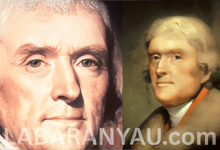
Irene Bernasconi Biography
Argentine marine biologist Irene Bernasconi was best recognized for her work in the Antarctic and was an expert in the study of echinoderms.
She spent 55 years researching echinoderms found in the Argentine Sea and was the country’s first expert in the field. On July 7, 1989, Bernasconi passed away.
She was born on September 29, 1896, which is also her birthday. She studied brittle stars, sea urchins, and sea stars in addition to sea stars, but sea stars were her main focus.
Irene Career
Bernasconi was in charge of describing numerous new species and genera during the course of her career.
She published her first article in the scientific journal Taxonomy in 1935, which was a description of a brand-new species in the genus Pteraster. In 1941, she described two new species that belonged to the genus Luidia.
Between 1937 and 1980, Bernasconi was in charge of revising the taxonomy of a number of families. Pterasteridae, Luidiidae, Odontasteridae, Gonisasteridae, Ganeriidae, Asterinidae, and Echinasteridae are some of these families.
She published her description of the novel genus Vemaster and its four novel species in 1965.
On November 7, 1968, Bernasconi embarked on her first expedition to Antarctica, making her one of the first female scientists from Argentina to do research there.
She was also the first female leader of an Antarctic expedition. She was 72 years old when we first met her.
Maria Adela Caria, a microbiologist, Elena Martinez Fontes, a marine biologist, and Carmen Pujals, a botanist, were all with her.
Irenason Age
1896–1989 She is 92 Years of old.
Recognition
In 1969, the “Embajada de Mujeres de América” (also known as the “Embajada of Women of America”) gave a commemorative medal to each member of the expedition in honor of the fact that they were the first group of female scientists to conduct research in Antarctica.
The band received a significant lot of recognition after their passing. Four places in Antarctica were named after the scientists by the Argentine Foreign Ministry, the Argentine Antarctic Institute, and the National Antarctic Directorate to mark the campaign’s 50th anniversary.
Pujals Bay, Cape Cara, Cape Fontes, and Bernasconi Bay are among these places. The Naval Hydrography Service gave its permission to these names.
Cause Of Death
Let’s look at what transpired on the expedition as Google Doodle recognizes Irene Bernasconi’s voyage leading a marine biology expedition in Antarctica on November 7.
The expedition is led by Irene Bernasconi, Mara Adela Cara, head of the MACN’s microbiology department, Elena Martnez Fontes, director of the department’s marine invertebrates section, and Carmen Pujals, a famous phycologist (seaweed specialist).
Discover more from Labaran Yau
Subscribe to get the latest posts sent to your email.



















